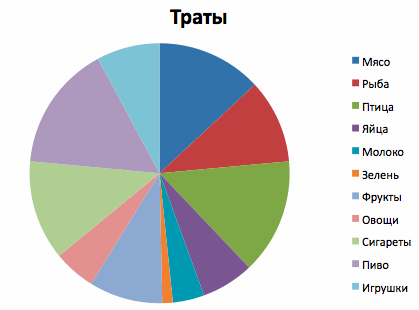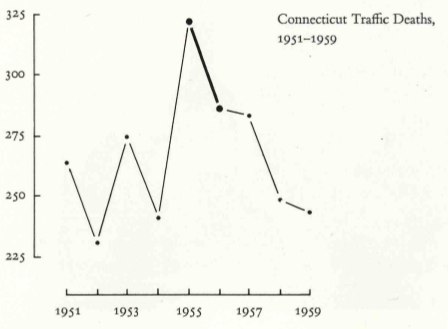Anti-design. Part 2. Obvious techniques
[ Part 3 has already appeared ]
Designers are always looking to improve their work. Professionals are constantly learning, communicating, striving to learn new ideas - all this helps to solve people's problems more correctly, quickly and efficiently.
But what if not all designers apply their skills to solve problems that we consider worthy? What if not everyone is trying to facilitate access to information, to streamline it, to arrange it beautifully, to give the consumer exactly in the place where he needs it?
')
Not so long ago, I wrote an article titled " Anti-Design ." In it, I said that when applying the laws of design, on the contrary, various organizations deliberately confuse people, make it difficult to perceive information and make a profit from it.
I am worried about this topic. I decided to develop it and in the following articles I will show the main techniques of anti-design. Noticing them in ordinary life, you can understand that this is not just the curvature of someone's hands, but a conscious intention. Perhaps you will notice how they want to confuse you, embarrass, try to manipulate you.
In this article I will begin by analyzing the obvious, direct and explicit methods of anti-design.
The easiest way to restrict access to information is coding. Its inappropriate use of a few thousand million times will slow down the absorption and perception of information. Make it impossible to analyze it.

When people are faced with denial of a visa, they see only their passport with some kind of stamp and letters. There are several opinions about what these letters mean: just a type of visa or an encrypted reason for refusal. Some offices even manage to get paid for the interpretation of embassy codes.
But in this example, we see the simple absence of decoding codes. Anti-design is used when all the necessary information must be provided to the person. Here, on the "help" can come the way of coding and the form of the location of the encoded data.

Next - under the cut.
On such a graph, only very different values are clearly visible, but the identification of their affiliation, and even more analysis, is painstakingly difficult. Try to understand what is spent more: on fruit or milk? The movements of your eyes will begin to resemble the movements of the mixer, and after a short time the brain will require you to stop the ugliness and cut off the electricity to the mixer.
This is just a hypothetical family budget. Not serious? But if it were not for her husband that he wanted to hide his beer affairs from his economist wife and miser, but a careless manager, the quarter’s results from the director? Or your contractor promotion results?
Although there is a coding method that is almost imperceptible. Unless you start thinking, you will be sure that now is the time to buy a hut with two Jacuzzis on Ostozhenka, because it costs the same as two years ago, dramatically collapsing in price. There is enough money even for a concubine.

But stand still. After all, here prices are coded in the favorite way of all merchants from the nineties - the magic spell "U". If you translate prices into rubles, the picture instantly transforms.

Look at the promises from the TV “The machine for the price of 2008! Hurry up! ” Now translate it into rubles. The wails of the merchants about the crisis somehow immediately become less convincing, because in many cases they simply deceive you.
Well, this is all clear. Most often, of course, there is no insidious application of the laws of design, and their ignorance. Therefore, the effect of anti-design can be random. Benefit here are the designers themselves - producing “designs” show the customer the complexity of their work.

Generally, info-noise, littering, design - in different cases these are phenomena of the same rule 1 + 1 = 3. Placing one functional element and one decorative element creates another decorative element, which is formed in between, which overloads the brain, making it difficult to perceive information.
If you correctly surround the textured warning boxes about the dangers of alcohol, many people simply will not see it. Having bought cough syrup, you will think that the mark on it is part of the ornament and its meaning is worthless.
In this method, ordering and design can be correctly and beautifully applied. But only to information that in itself is of little use. Any idea can be illustrated with large tables with research data. Statistical records of profits of companies - participants of the next rating will seem convincing to you, but how many people will use these data to understand?

Formally, nothing is hidden or coded in the stock price table, but thousands of companies make money on processing this data. Server log analysis packages can cost a lot of dollars.

In principle, there is nothing wrong in that. After all, companies spend energy on data analysis and resources to develop tools for its implementation. It is logical to pay for these their works.

But it is not clear to hysterics why you need to pay for ... uh ... analysis? processing? No, for restricting access to my own data!
Here I would like to introduce one new term:
The Eskimos are perhaps the most annoying examples of anti-design. But what is even more annoying is that there will always be people who will buy this snow.
ABOUT! An endless stream of examples of this type of anti-design can be obtained by simply including the news. Tele, of course, is not exactly design, but nothing prevents you from using the same methods, for example, in propaganda leaflets, posters, banners, newspapers.

Splash some event on some other process - get a PR article and sign it. You can sew with multi-colored threads with large stitches anything to anything. And it works in all possible directions.

Medvedev responded to a complaint in a blog + poor hospitals = revival of the medical system.
Medvedev responded to the complaint in the blog + and today did not respond = window dressing and deception of the people.

To understand what is happening at all, you need to know what it really was. Maybe Medvedev just fell forfeited to do good for 24 hours, but we will never know. Like a bunch of other things that we see only placed in a non-original context.
Gorepils also love this method very much. Having demonstrated some spectacular figure or segment, they immediately announce Achievement, Trend or Crisis. Although in fact embarrassedly silent about other figures that surround her.

To understand the real state of affairs, one has to step back, move away to see more.

It is possible to powder heads with beautiful figures by fitting them to some significant event. For example, it is possible to operate habraeffekt. Paste a link to yourself on a known resource:
http://nordisk.pp.ru/design/
And then tell advertisers and sponsors about the stunning attendance of your site.

And under pain of death, not to mention that tomorrow everything will change dramatically. Suddenly, a ride.

(Eh, damn, I thought of it so well. It's a pity that I hate advertising and I have no sponsors :(
The first idea is that the villainous man illustrates his data with pictures that do not correspond to these dimensions.

Cautious schemers can always fall on the "decorative" drawings, but they can not allow this.
Then they can cheat with the data itself. This picture shows two graphs of oil prices: taking into account inflation and without. Imagine how you can put pressure on people's opinion, if you show only one of them

Finally, if they reveal it here, it is possible to give a view on the subject of discussion from another viewing angle, which is in no way relevant, but beautiful and winning.

After all, on this design project, the arrows will cast a spell unless the residents of the upper floors, but the police on helicopters. The users of the stop, pedestrians, don't give a damn about them, because they see the structure from a different angle.
The thought of man is like a tree. Starting from simple, it branches and multiplies, sharing and developing in different directions. Very often, for the growths of reasoning and clarification it becomes impossible to discern the main idea.
Such a root-branching system is represented by almost all legislative books. Some process begins to be regulated in some way, then regulation refinements grow, then exceptions to regulation are bumped, then ambiguous interpretations of exceptions to regulation are branched out - and so on ad infinitum: additions, clarifications, references.
Do not be afraid to vaguely express the process. Here are the Russian rules of the road, where they try to describe where you can not put the car.

This “convex fracture of the longitudinal profile” is an attempt to unambiguously determine the terrain, but there will still be exceptions and clarifications, because the world is infinitely diverse. Must stop. It is necessary to set the goal of the product - to regulate movement and to be easily remembered - above the legal subtleties. Here is the same paragraph in the English translation of the Norwegian traffic rules:

The complication of simple literally begets life, which, like bacteria, lives and multiplies on numerous branches and leaves.

The knot of simple complications can never be untied, it gets even more confused - you have to chop it up.
The meaning of design art is to help people solve their problems. But design is also a weapon that affects the human mind.
Design offers order and beauty, gives a ready-made solution where a person would have to spend time on achieving it. But this means that he can block the process of thinking and impose a solution that is beneficial to the attacker. This is anti-design.
Many companies benefit from the use of anti-design. They deceive you, influence your decisions, do not provide information that is important for your health and wallet. Talented people work in these companies, but their talent is aimed at lies and enrichment at your expense. Obvious methods that they use, I described in this article. In the next, I will move on to more cunning, hidden and dangerous manipulations.
Designers are always looking to improve their work. Professionals are constantly learning, communicating, striving to learn new ideas - all this helps to solve people's problems more correctly, quickly and efficiently.
But what if not all designers apply their skills to solve problems that we consider worthy? What if not everyone is trying to facilitate access to information, to streamline it, to arrange it beautifully, to give the consumer exactly in the place where he needs it?
')
Not so long ago, I wrote an article titled " Anti-Design ." In it, I said that when applying the laws of design, on the contrary, various organizations deliberately confuse people, make it difficult to perceive information and make a profit from it.
Anti - design - (here) the intentional complication of access to information, which must be open, in order to obtain benefits.
I am worried about this topic. I decided to develop it and in the following articles I will show the main techniques of anti-design. Noticing them in ordinary life, you can understand that this is not just the curvature of someone's hands, but a conscious intention. Perhaps you will notice how they want to confuse you, embarrass, try to manipulate you.
In this article I will begin by analyzing the obvious, direct and explicit methods of anti-design.
1. Coding
The easiest way to restrict access to information is coding. Its inappropriate use of a few thousand million times will slow down the absorption and perception of information. Make it impossible to analyze it.

When people are faced with denial of a visa, they see only their passport with some kind of stamp and letters. There are several opinions about what these letters mean: just a type of visa or an encrypted reason for refusal. Some offices even manage to get paid for the interpretation of embassy codes.
But in this example, we see the simple absence of decoding codes. Anti-design is used when all the necessary information must be provided to the person. Here, on the "help" can come the way of coding and the form of the location of the encoded data.

Next - under the cut.
On such a graph, only very different values are clearly visible, but the identification of their affiliation, and even more analysis, is painstakingly difficult. Try to understand what is spent more: on fruit or milk? The movements of your eyes will begin to resemble the movements of the mixer, and after a short time the brain will require you to stop the ugliness and cut off the electricity to the mixer.
This is just a hypothetical family budget. Not serious? But if it were not for her husband that he wanted to hide his beer affairs from his economist wife and miser, but a careless manager, the quarter’s results from the director? Or your contractor promotion results?
Although there is a coding method that is almost imperceptible. Unless you start thinking, you will be sure that now is the time to buy a hut with two Jacuzzis on Ostozhenka, because it costs the same as two years ago, dramatically collapsing in price. There is enough money even for a concubine.

But stand still. After all, here prices are coded in the favorite way of all merchants from the nineties - the magic spell "U". If you translate prices into rubles, the picture instantly transforms.

Look at the promises from the TV “The machine for the price of 2008! Hurry up! ” Now translate it into rubles. The wails of the merchants about the crisis somehow immediately become less convincing, because in many cases they simply deceive you.
2. Infoshum
Well, this is all clear. Most often, of course, there is no insidious application of the laws of design, and their ignorance. Therefore, the effect of anti-design can be random. Benefit here are the designers themselves - producing “designs” show the customer the complexity of their work.

Generally, info-noise, littering, design - in different cases these are phenomena of the same rule 1 + 1 = 3. Placing one functional element and one decorative element creates another decorative element, which is formed in between, which overloads the brain, making it difficult to perceive information.
If you correctly surround the textured warning boxes about the dangers of alcohol, many people simply will not see it. Having bought cough syrup, you will think that the mark on it is part of the ornament and its meaning is worthless.
3. Raw data
In this method, ordering and design can be correctly and beautifully applied. But only to information that in itself is of little use. Any idea can be illustrated with large tables with research data. Statistical records of profits of companies - participants of the next rating will seem convincing to you, but how many people will use these data to understand?

Formally, nothing is hidden or coded in the stock price table, but thousands of companies make money on processing this data. Server log analysis packages can cost a lot of dollars.

In principle, there is nothing wrong in that. After all, companies spend energy on data analysis and resources to develop tools for its implementation. It is logical to pay for these their works.

But it is not clear to hysterics why you need to pay for ... uh ... analysis? processing? No, for restricting access to my own data!
Here I would like to introduce one new term:
Eskimo - (here, abbr. From “selling snow to Eskimos”) is a functional whose purpose is to take money for laboriously unreasonable manipulations with data that is already available.
The Eskimos are perhaps the most annoying examples of anti-design. But what is even more annoying is that there will always be people who will buy this snow.
4. False context
ABOUT! An endless stream of examples of this type of anti-design can be obtained by simply including the news. Tele, of course, is not exactly design, but nothing prevents you from using the same methods, for example, in propaganda leaflets, posters, banners, newspapers.

Splash some event on some other process - get a PR article and sign it. You can sew with multi-colored threads with large stitches anything to anything. And it works in all possible directions.

Medvedev responded to a complaint in a blog + poor hospitals = revival of the medical system.
Medvedev responded to the complaint in the blog + and today did not respond = window dressing and deception of the people.

To understand what is happening at all, you need to know what it really was. Maybe Medvedev just fell forfeited to do good for 24 hours, but we will never know. Like a bunch of other things that we see only placed in a non-original context.
5. Time cut
Gorepils also love this method very much. Having demonstrated some spectacular figure or segment, they immediately announce Achievement, Trend or Crisis. Although in fact embarrassedly silent about other figures that surround her.

To understand the real state of affairs, one has to step back, move away to see more.

It is possible to powder heads with beautiful figures by fitting them to some significant event. For example, it is possible to operate habraeffekt. Paste a link to yourself on a known resource:
http://nordisk.pp.ru/design/
And then tell advertisers and sponsors about the stunning attendance of your site.

And under pain of death, not to mention that tomorrow everything will change dramatically. Suddenly, a ride.

(Eh, damn, I thought of it so well. It's a pity that I hate advertising and I have no sponsors :(
6. False image
The first idea is that the villainous man illustrates his data with pictures that do not correspond to these dimensions.

Cautious schemers can always fall on the "decorative" drawings, but they can not allow this.
Then they can cheat with the data itself. This picture shows two graphs of oil prices: taking into account inflation and without. Imagine how you can put pressure on people's opinion, if you show only one of them

Finally, if they reveal it here, it is possible to give a view on the subject of discussion from another viewing angle, which is in no way relevant, but beautiful and winning.

After all, on this design project, the arrows will cast a spell unless the residents of the upper floors, but the police on helicopters. The users of the stop, pedestrians, don't give a damn about them, because they see the structure from a different angle.
7. The complication of simple
The thought of man is like a tree. Starting from simple, it branches and multiplies, sharing and developing in different directions. Very often, for the growths of reasoning and clarification it becomes impossible to discern the main idea.
Such a root-branching system is represented by almost all legislative books. Some process begins to be regulated in some way, then regulation refinements grow, then exceptions to regulation are bumped, then ambiguous interpretations of exceptions to regulation are branched out - and so on ad infinitum: additions, clarifications, references.
Hyperhypertext is a text with a bunch of references to other parts that refer to the third parts, and those to the first and fifth, in which there is no mention of the second, but there are sixth.
Do not be afraid to vaguely express the process. Here are the Russian rules of the road, where they try to describe where you can not put the car.

This “convex fracture of the longitudinal profile” is an attempt to unambiguously determine the terrain, but there will still be exceptions and clarifications, because the world is infinitely diverse. Must stop. It is necessary to set the goal of the product - to regulate movement and to be easily remembered - above the legal subtleties. Here is the same paragraph in the English translation of the Norwegian traffic rules:

The complication of simple literally begets life, which, like bacteria, lives and multiplies on numerous branches and leaves.

The knot of simple complications can never be untied, it gets even more confused - you have to chop it up.
Conclusion
The meaning of design art is to help people solve their problems. But design is also a weapon that affects the human mind.
Design offers order and beauty, gives a ready-made solution where a person would have to spend time on achieving it. But this means that he can block the process of thinking and impose a solution that is beneficial to the attacker. This is anti-design.
Many companies benefit from the use of anti-design. They deceive you, influence your decisions, do not provide information that is important for your health and wallet. Talented people work in these companies, but their talent is aimed at lies and enrichment at your expense. Obvious methods that they use, I described in this article. In the next, I will move on to more cunning, hidden and dangerous manipulations.
Source: https://habr.com/ru/post/58445/
All Articles